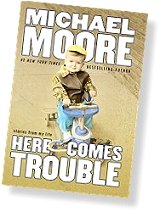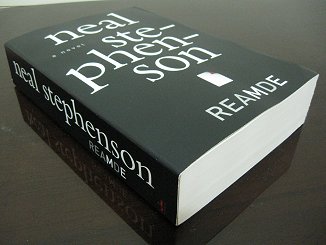As an editor, it is my sworn duty to eliminate every single typo I find. They're the easy kind to deal with, simple search-and-destroy. So I tend to be critical of typos I find in other publications, even menus. If I can't correct them, I make it a point to poke fun at them. By "poke", I mean to stab it repeatedly and violently until the whole mess resembles a metaphorical pile of finely minced meat.
Less than a year and it feels like I've "been in the job too long".
Of course, this obsessive compulsive behaviour is unhealthy. It does not "keep you on your toes". It's a serious sign of one's lack of work-life boundaries. Pretty soon, you'll be like that Adrian Monk character.
Which is why I'm learning to let go, little by little.
Nowadays I poke fun - in private - at the most serious typos. The one in Susan Andersen's book is relatively minor, and I'm not saying that because I'm not keen on the genre.
But some typos inspire much cringing, head-shaking and migraines. TIME Magazine, in one of its Quotes of the Day, had the unfortunately misspelled "Profit Muhammad". And previously, the New York Times listed Farish Noor as a senior fellow of the S. Rajaratnam School of International Studies (RSIS) at Nanyank Technological University. From the Daily Dish, one entry raises a titter with: "From JK Rowling to Hugh Grant and the London police: a list of those picked to help with the ongiong inquiry." All these errors were quickly corrected.
Then, this list of ""unforgivable errors" from the good folks at Buzzfeed. Commenters made their own contributions, one of which includes the sign, "Wed Paint". The picture-heavy post takes too long to load on slower connections, so I've made a select list:
2) On a window: "Kitchen Cabinet Vanity Granite Cuntertop"
3) On a balloon: "Lewis Coutny Republican Committee"
5) A news article headline reads: "Vietnam soldier to be buried at Arlingtron".
12) On what looks like a FOX News marquee: "Jewerly Heist". Figures, don't it?
13) A neon sign at some motel called Econo Lodge also advertised its "Wire Lies" service. Ain't that Wikileaks?
19) A sign proclaims an old favourite: "No Pubic Access Keep Out".
24) Heartbreaking epitaph on a tombstone: "JAMES ANTHONY KATONA MAR. 21. 1976 - MAR. 24. 1976 OUR LITTLE ANGLE". This should've been Unforgivable Error #1.
26) This Phil Rohrer's Lunch place has US$1.20 burgers and four kinds of "ho-made soups".
28) A neon sign proclaims its "Appriciation" to the teachers at Monroe High School. "Thank You Teachers" indeed.
33) Not just bad spelling but bad punctuation: "NO KIDS!!! ON THE PAINO PLEASE THANK-YOU.
40) Aaand finally, Allisonville Nursery, "Where Home and Garden Meet", has "Fresh Cut Penis" for US$7.99. Ow....
The perfect manuscript, like the shiny, sleek and flawless exterior of some Apple products will, after a while, become boring. Who wants that? Maybe Steve Jobs, but he's not in charge anymore.
Just as the presence of caterpillars and worms are a gauge of how organic produce is, I've come to regard typos and other assorted errata in publications as a sign that human hands were really involved in a production. Borne of a real person's mind and heart and spilled onto paper or screen by hands, appendages of flesh, sinew, muscle and bone. An organic production.
At times, typos may not be such a bad thing. It can, as the above suggest, be funny. Not boring. They remind you that perfection does not exist on earth, and one shouldn't feel too bad if they aren't perfect. In the unintended humour, they help you lighten up a little. Never mind if it indicates low levels of language skills - those can be improved.
But please, never misspell names. Ever.
And once I'm done reflecting upon and appreciating the humanity behind the erratum, I will still take my trusty red pen and do the needful.
That being said, I still chafe at the writer who leaves his manuscript to the care of an editor, typos and all. With spell-checking features in today's word processors, it's not too much to ask the writer to fix all these before it reaches the editor's desk.
Not that I find correcting typos demeaning; it's a living, after all. I'm sure many editors, however, would prefer to spend time polishing a manuscript than dotting "i"s or filling in missing full stops.
Categories:
Uncategorised



